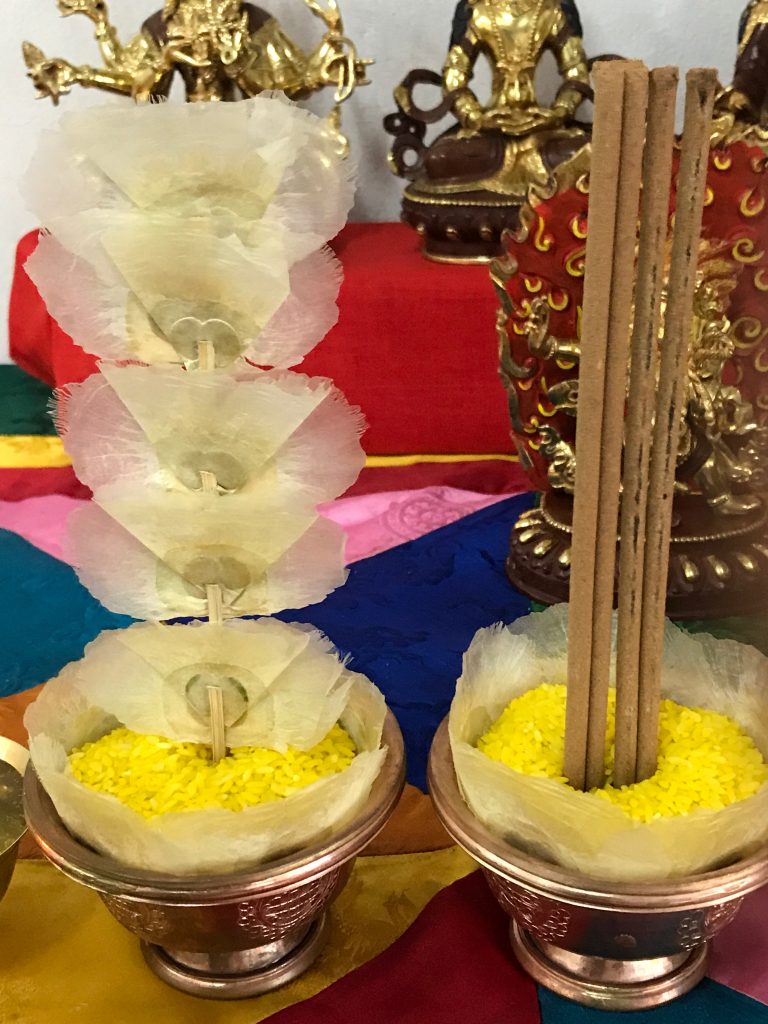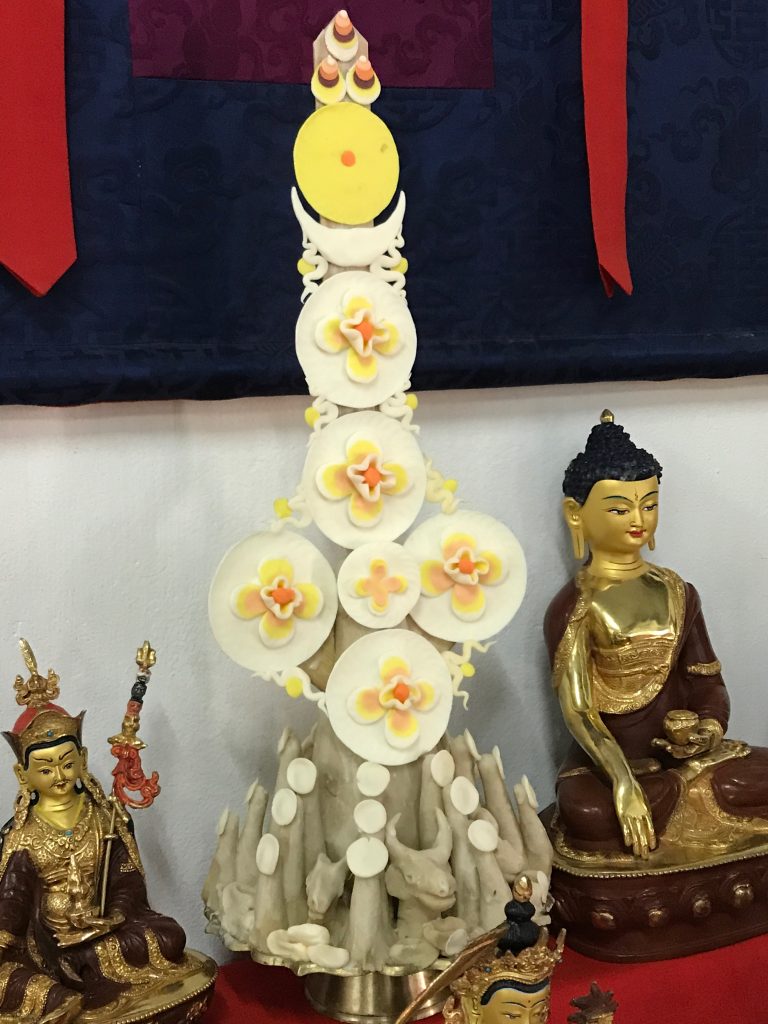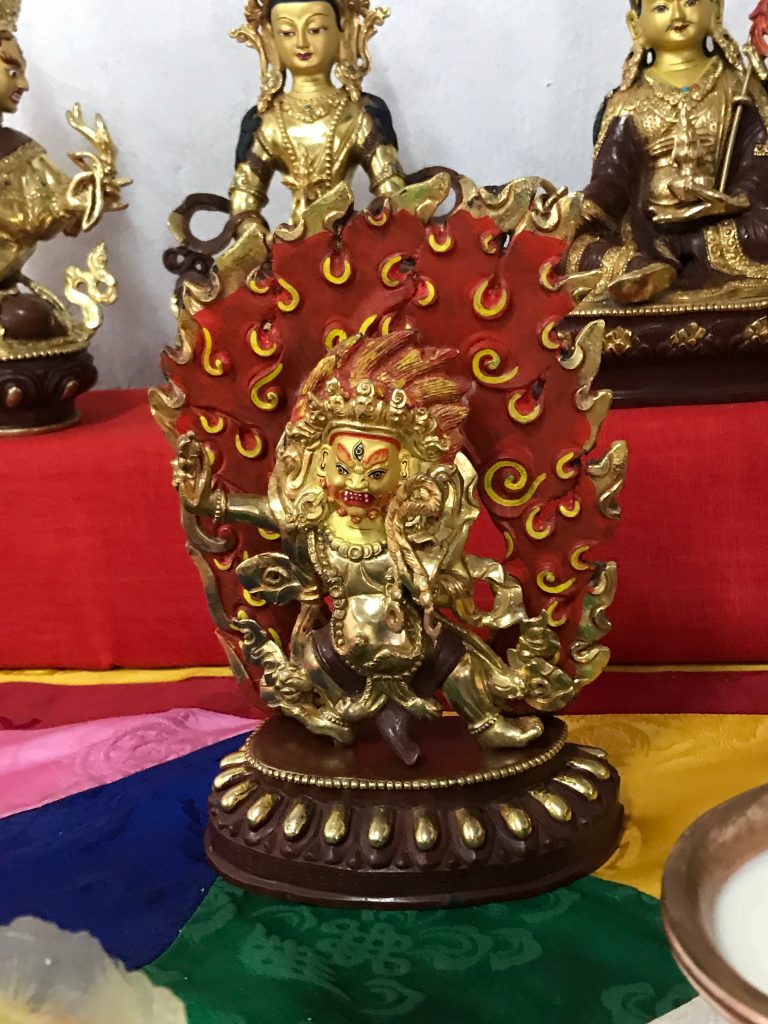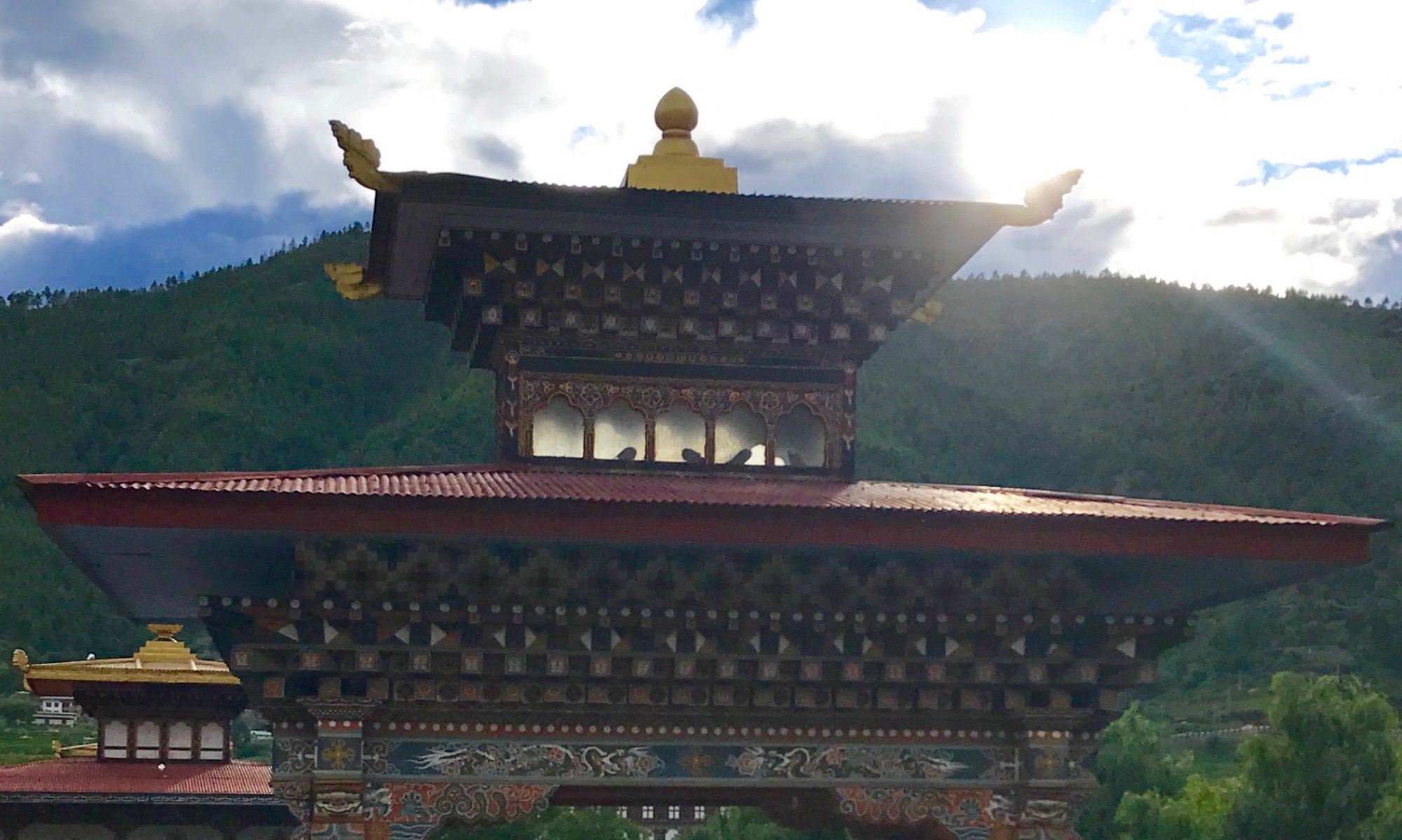The new academic block had to be consecrated before it could be used. I had asked Thinley if I could participate in the consecration ceremony and he said that I could, but pinning down the timing of the ceremony was a little tricky. The original plan had been Thursday or Friday of the previous week, but it turned out that the Rinpoche was very busy. Yonphula Lakhang (a Nyingma monastery, different from the Kagyu monastery in Kanglung) was holding its own retreat, a ten-day Drubchen designed (according to Wikipedia) to act “as a remedy to the negative forces at work in the world, and to promote inner personal peace, peace within the community and world peace.” In the Nyingma tradition, teachers don’t have to be monks: leaders are often married. The Yonphula Rinpoche is the son of a famous lama and (according to James) is considered to be the reincarnation of his grandfather.
Monday, Thinley said the ceremony would happen Wednesday. “Before classes? During classes?” We had already been discussing canceling classing Thursday and Friday so that the students can help prepare for the inauguration. “Before classes,” Thinley said, reassuringly. On Tuesday evening, Thinley said the ceremony would start at 7 and Pema would pick me up at 6:45. Wednesday morning at 5, I received an email (sent Tuesday at 10:30) to say that the ceremony would begin instead at 6, and Pema was coming between 5:30 and 5:45. At 5:30, I called Pema, waking him up, to ask if he was coming. Oh, well. At the upper market, we had to wait for UT to get dressed—he brought an extra gho for someone else to wear.
Driving up the mountain, it was clear enough to see snow peaks for the first time. “What are those mountains?” I asked, but no one could tell me. “Don’t people normally know the names of snow mountains?” I said. “Oh, but those mountains are in India, madam. We only know the names of our own mountains.”
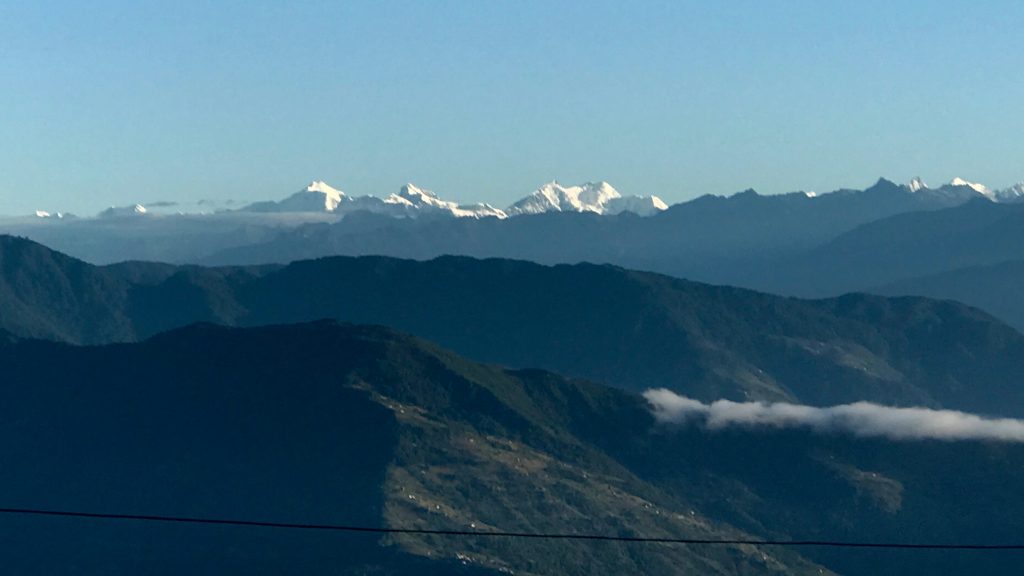
“That’s India?” I asked. “I thought it was Mongar.”
“No, madam. These mountains” (pointing to the south side of the eastern range) “are Mongar. Those mountains (further north) are Trashi Yangtse and then India: Arunachal Pradesh.”
We arrived and swarmed up the steps toward the academic block. “It just started ten minutes ago,” Dorji said, consolingly, knowing my American peculiarity around time. He led me into the academic block and gestured for me to sit next to the Dean (Thinley). I didn’t take photos during the ceremony, out of respect, though Thinley and others keep saying it’s fine to take photos. Still, it seems distracting and disrespectful to me. Certainly, I found it distracting to see a colleague (not the Dean) checking his email and leaving to take a phone call in the middle of the ceremony. So the photos here were taken after the ceremony, with permission/encouragement, or later, at another event.
The Rinpoche, in Nyingma style, wore his longish hair pulled back in a ponytail. (This is a photo from the Yonphula inauguration–no security forces at the consecration!)
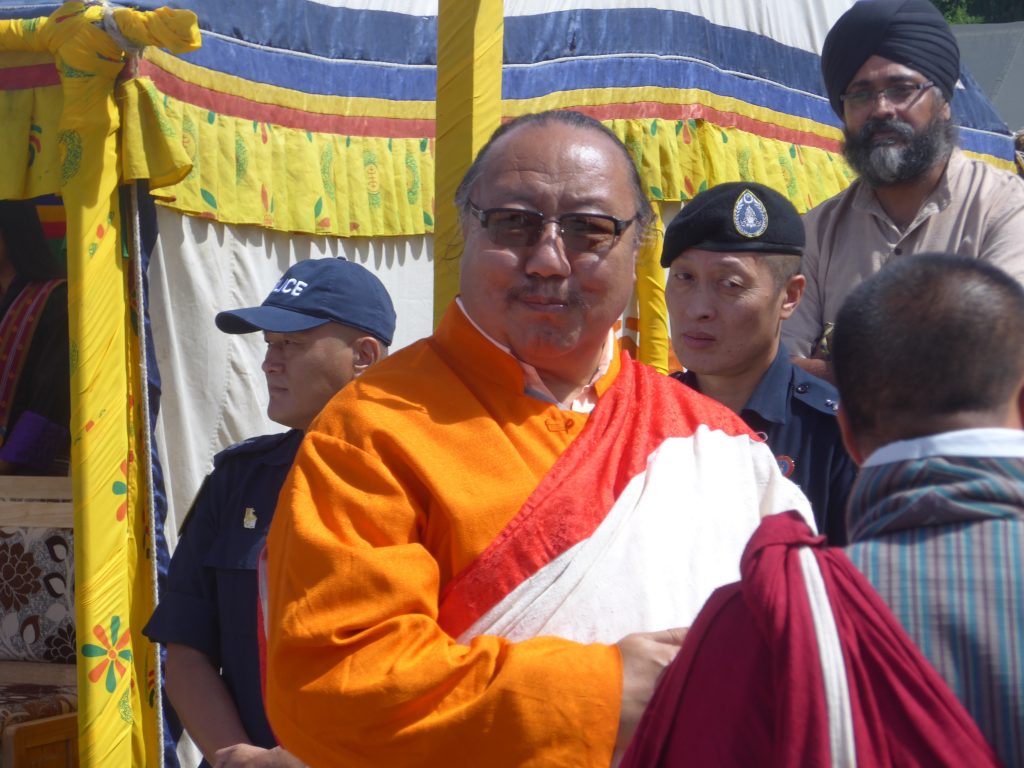
He had a red striped shawl over his robes. He sat elevated, with a senior monk on the floor beside him.
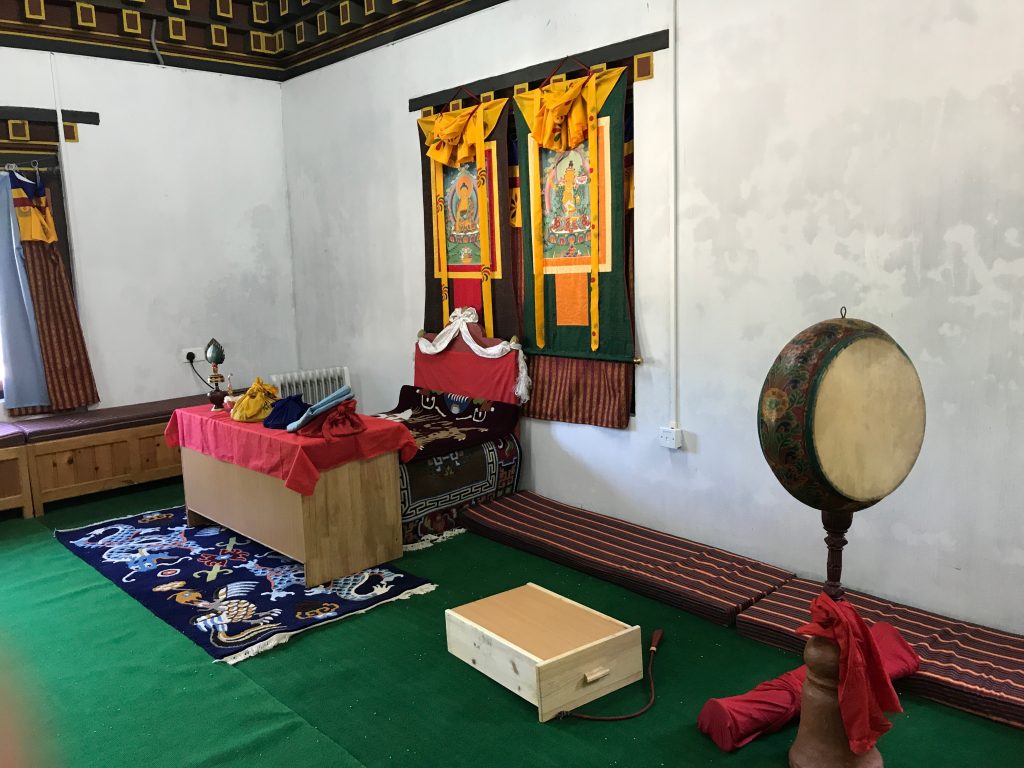
Two horn players, dressed in charcoal gray ghos with (rather dirty) blue sleeves, sat beside the senior monk, playing through most of the ceremony. Then there was a younger monk, with a black mask over his mouth, performing various ritual actions in front of the altar.
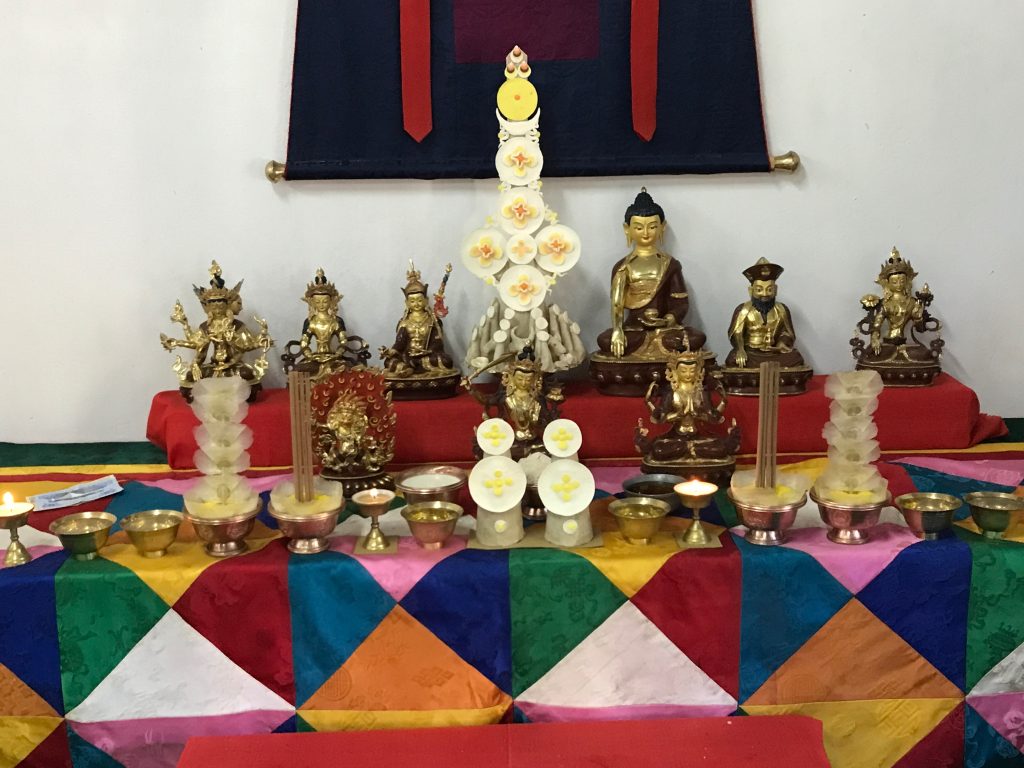
The Rinpoche and the senior monk chanted through much of the ceremony. They also played relatively complex rhythms on cymbals and drums: the senior monk played both cymbals and a standing drum, while the Rinpoche played cymbals and a small hand drum.
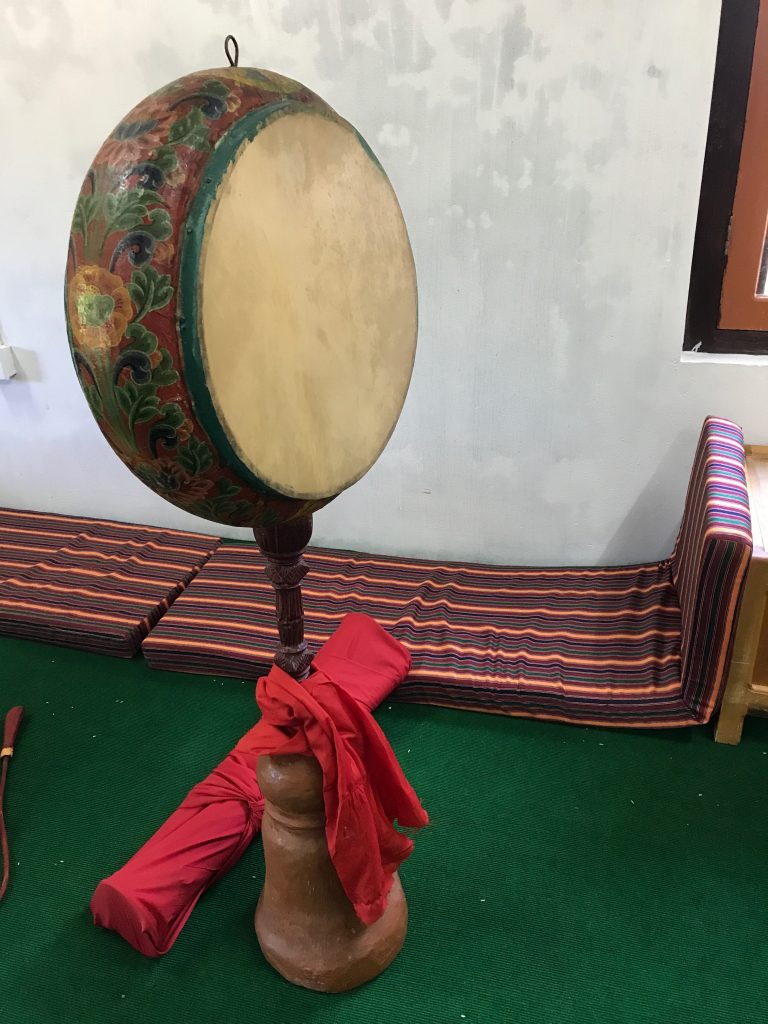
The Rinpoche alternated between tapping his prayer beads against the cymbals (for a softer sound) and clanging the cymbals directly (for a louder sound). His hand drum was swung back and forth, with small beads banging against both sides for a clamorous banging noise at certain peak moments of the ceremony. The senior monk would sometimes blow on a conch shell, adding a much higher pitch to the tonality of the low horns. When he blew the conch shell, the first horn player had to play the standing drum as well as blowing his horn. The rhythms were neither terrifically complex nor utterly simple—I think it must take a lot of experience to stay on top of this multi-modal consecration music.
The young monk at the altar came back and forth repeatedly to the Rinpoche’s seat. There was a large pot which was repeatedly sprinkled with holy water. He also took the pitcher of holy water and poured a significant amount into a bowl in front of the altar while also holding up a mirror between his body and the pitcher, so that the altar images would be both in front of and behind the pouring water. (It seemed a little incongruous to me that the mirror was in a frame of baby blue plastic.)
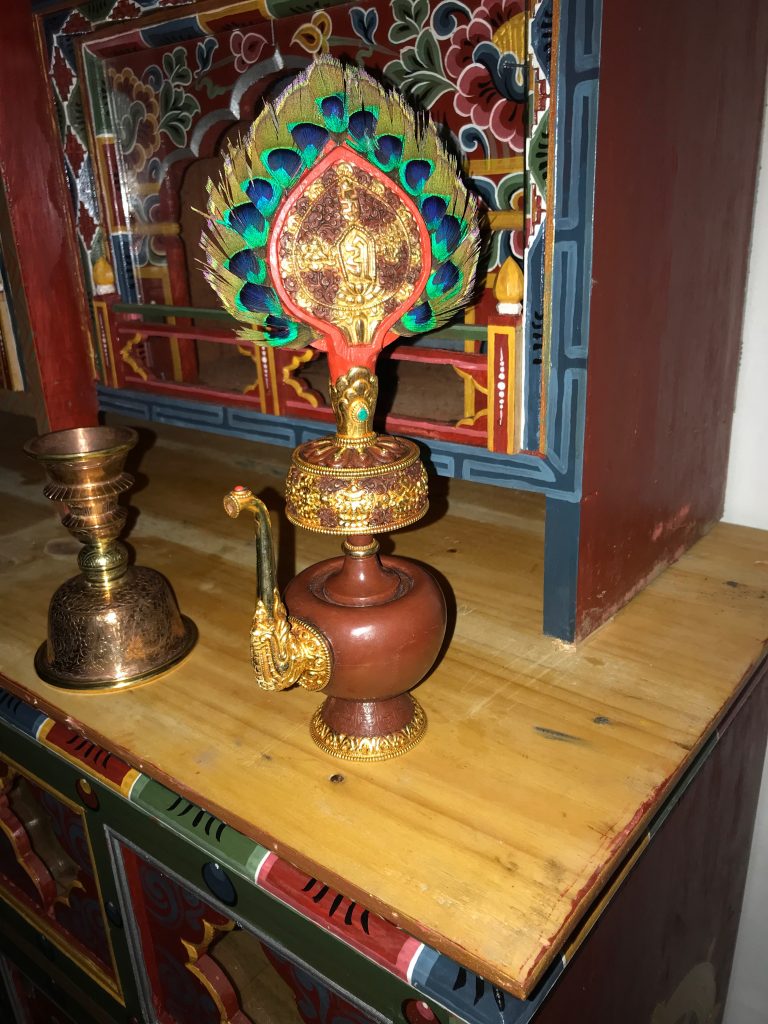
Pema was sent out with the young monk to scatter water? rice? other blessed substances around the building. The young monk brought various substances from the altar to the Rinpoche, who would take a pinch and toss it very gracefully into the air. Eventually, most of those substances were brought to the lay participants (the dean, me, Dorji) as well. We then followed the Rinpoche throughout the building scattering yellow rice and dried daphne bush bark (? This is a guess, based on the similarity of the fiber to the traditionally made paper we saw in Thimphu).
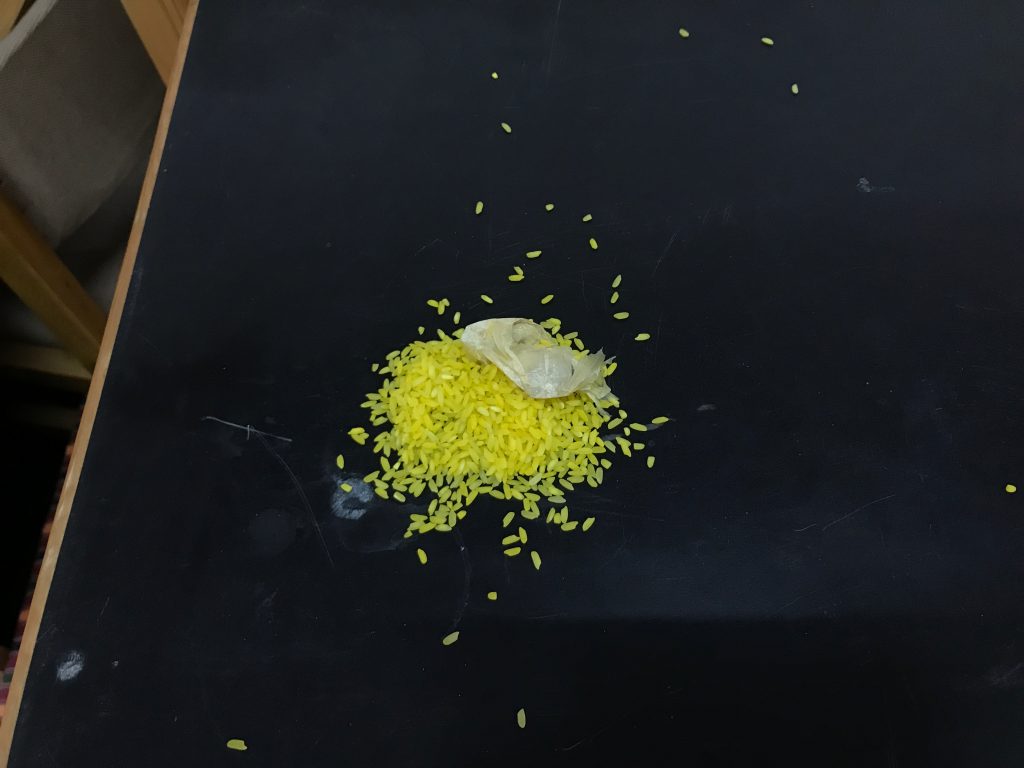
We returned to the reading room, where the ceremony was being held, and the different kinds of sacred substances were brought, first to the Rinpoche, and then to the rest of us: holy water, milk, toasted flour. We drank the liquids, poured into our left hands, then smoothed the remains over our hair. (Milk? Ok, ok.) The flour did not have to be put in one’s hair, thankfully.
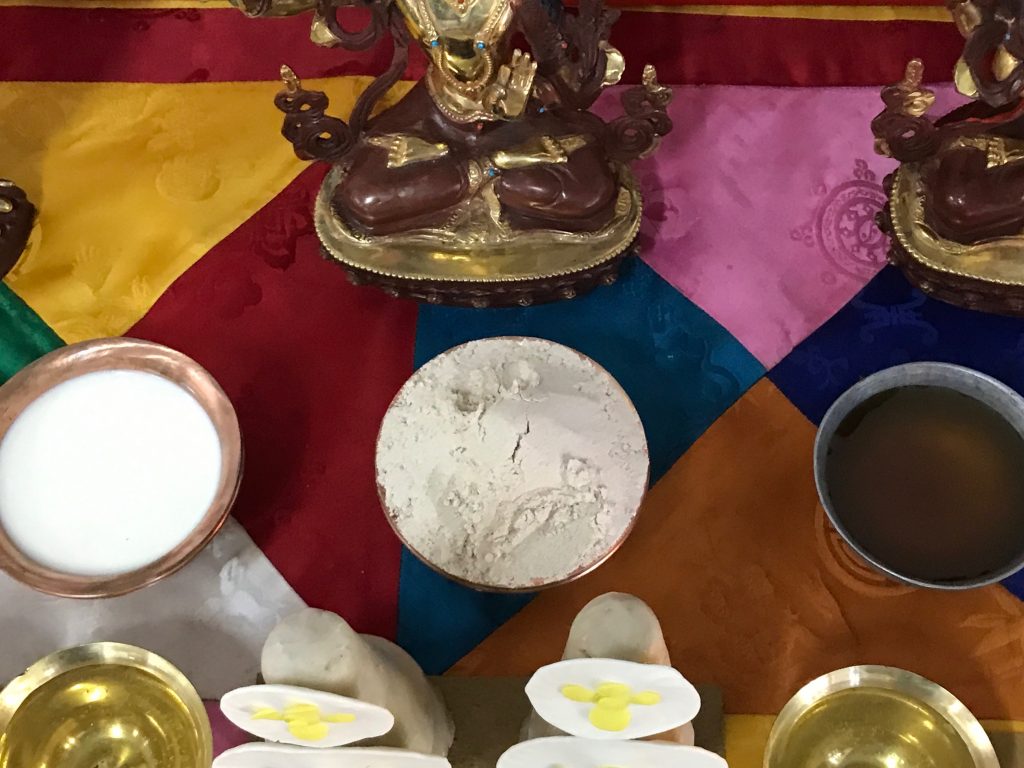
Then it was time for breakfast: the Rinpoche in the reading room, the other Nyingma practitioners (and me) in the discussion room.
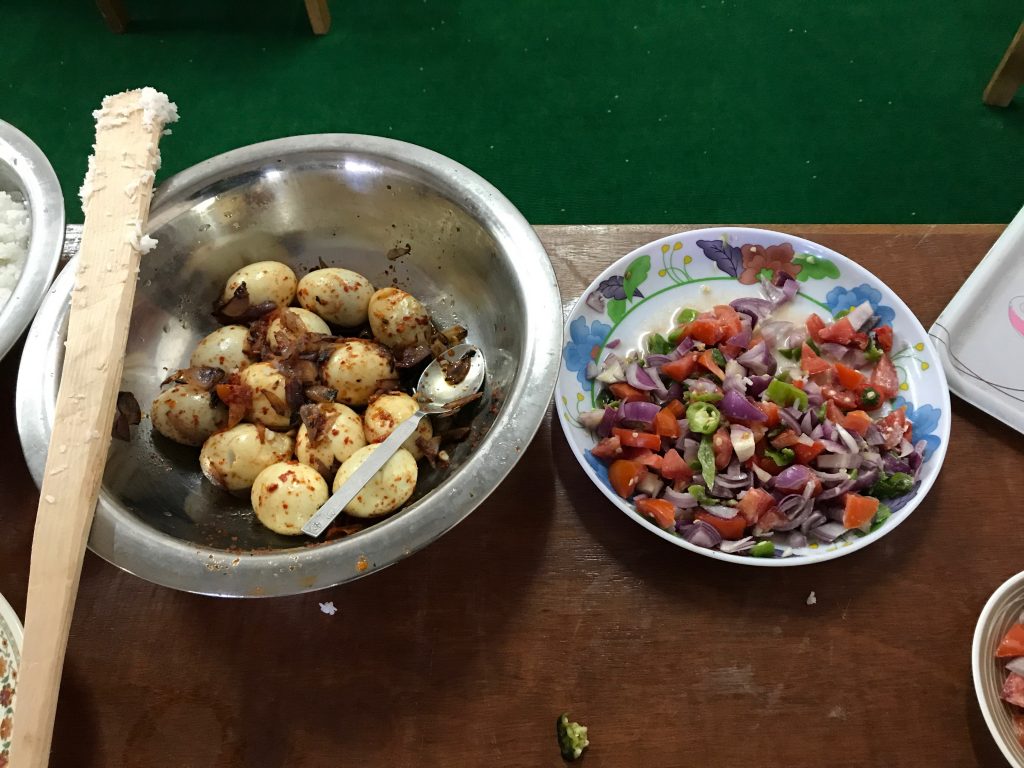
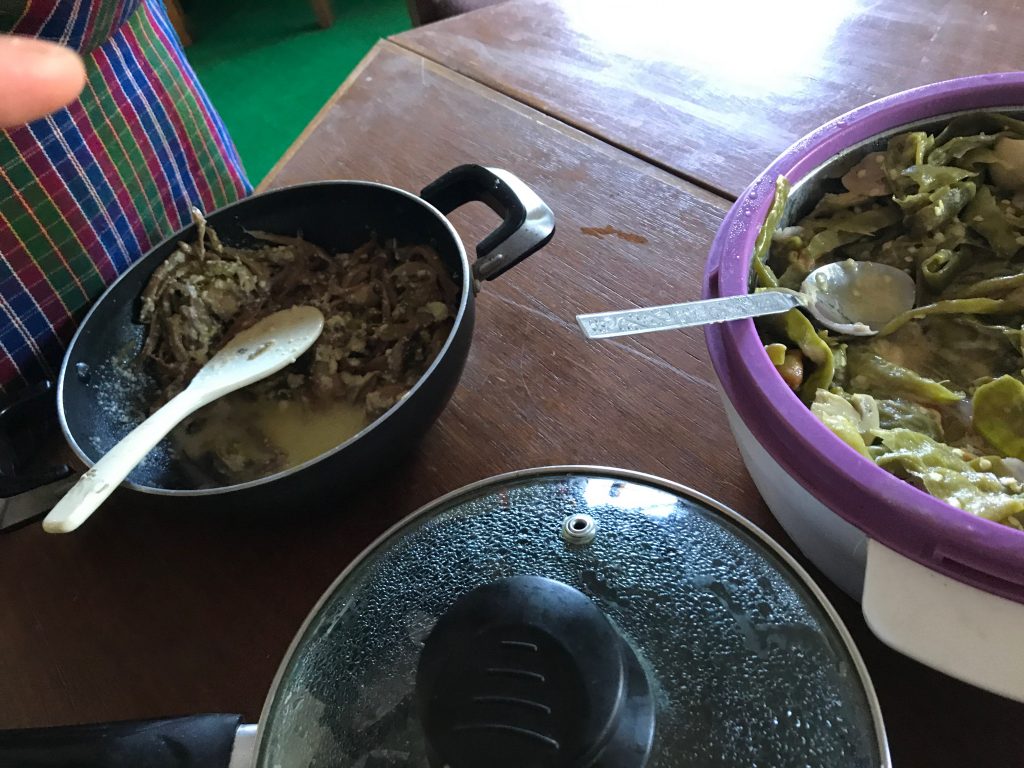
Once the Rinpoche was done, we escorted him out to his car. Each of us took a moment to hold his hands: he touched the Bhutanese on their heads, but when I bent down for a similar touch, he just held my chilip hands. Americans act with their hands, not with their heads, evidently.
Other images from the room in which the ceremony was held:
